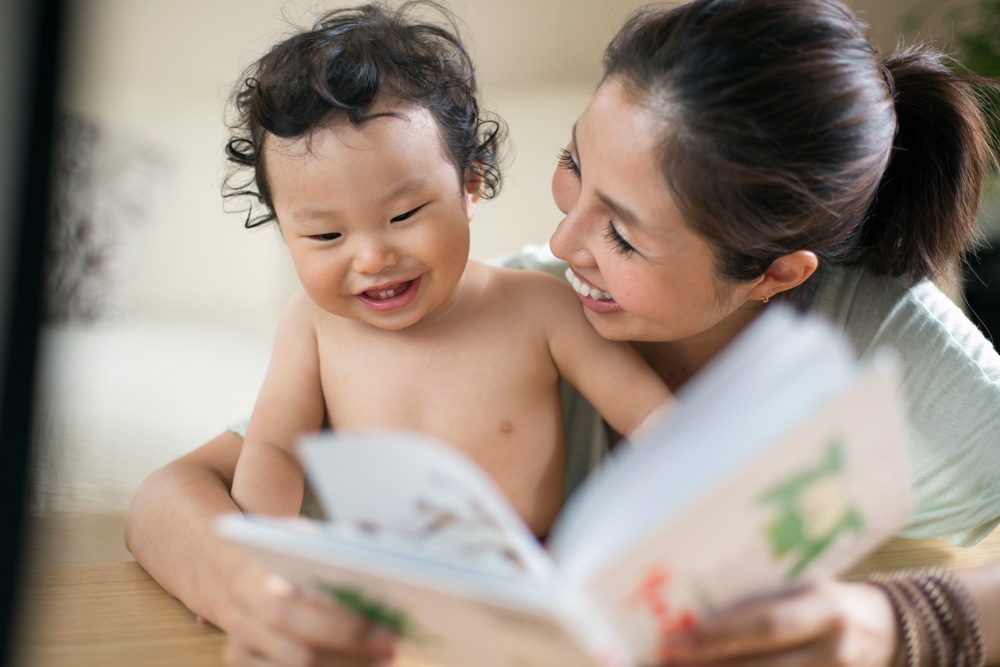
The Power of Play: Bonding and Learning Through Interaction with Your Baby
Play is a universal language that transcends age and culture; it is a fundamental aspect of human development that begins in infancy. For parents, understanding the power of play in bonding with and nurturing their baby is essential.
The interactions and activities that take place during playtime not only foster a strong parent-child bond but also play a pivotal role in the cognitive, emotional, and physical development of the infant.
In this article, we will explore the significance of play in the early stages of a baby’s life, the various forms of play that promote bonding and learning, and the role of the baby cot in creating a safe and stimulating environment for play.
The Importance of Play in Infant Development
Play is the primary mode through which infants explore and make sense of the world around them. From the earliest months of life, babies engage in various forms of play that contribute to their overall development.
Play serves as a vehicle for learning, self-expression, and social interaction, laying the foundation for cognitive, emotional, and physical growth.
Understanding the significance of play in infant development is crucial for parents as they seek to provide enriching and supportive experiences for their baby.
Bonding Through Play
Playtime presents invaluable opportunities for parents to form a deep and nurturing bond with their baby. The interactions, eye contact, and shared experiences during play foster a sense of security and attachment, strengthening the emotional connection between parent and child.
Through play, parents can communicate love, warmth, and support, creating a foundation of trust and security that is essential for the baby’s well-being.
Cognitive and Sensory Stimulation
Play activities stimulate the baby’s developing brain and senses, promoting cognitive and sensory development. Simple games, such as peekaboo, encourage the baby to anticipate and react to stimuli, fostering cognitive skills and spatial awareness.
Sensory play, including exploring different textures, sounds, and visual stimuli, enhances the baby’s sensory perception and cognitive processing.
Motor Skill Development
Playtime provides infants with opportunities to engage in physical activities that promote the development of gross and fine motor skills. From reaching and grasping to rolling, crawling, and eventually walking, the movements and explorations during play contribute to the baby’s physical development and coordination.
Emotional Expression and Regulation
Through play, babies learn to express and regulate their emotions. Play activities, such as imitating facial expressions, engaging in social games, and receiving responsive interactions from caregivers, support the baby’s emotional development.
These experiences help the baby understand and communicate feelings, paving the way for healthy emotional regulation and social interactions as they grow.
Types of Play for Bonding and Learning
There are various types of play that facilitate bonding and learning for babies. Each form of play offers unique benefits and contributes to different aspects of the baby’s development. Understanding these types of play can help parents create diverse and enriching play experiences for their baby.
Sensory Play
Sensory play involves activities that stimulate the baby’s senses, including touch, sight, hearing, taste, and smell. Examples of sensory play include exploring different textures, playing with colorful toys, listening to soothing music, and experiencing nature through outdoor play. Sensory play fosters sensory development, cognitive exploration, and emotional regulation.
Social Play
Social play involves interactions with parents, caregivers, and other family members. It includes activities such as peekaboo, singing together, and engaging in gentle physical interactions, such as tickling and bouncing.
Social play nurtures the parent-child bond, enhances social skills, and promotes emotional connection and responsiveness.
Exploratory Play
Exploratory play encourages babies to explore and manipulate objects in their environment. This type of play includes activities such as stacking blocks, playing with safe household items, and engaging in open-ended play with toys. Exploratory play supports cognitive development, problem-solving skills, and creativity.
Physical Play
Physical play encompasses activities that promote movement and physical development. For infants, physical play may involve tummy time, reaching for toys, and eventually crawling and cruising. Physical play contributes to the development of motor skills, coordination, and spatial awareness.
The Role of the Baby Cot in Play and Development
The baby cot plays a significant role in creating a safe and conducive environment for play and development. The design and features of our baby cot contribute to your baby’s comfort, safety, and engagement during playtime.
- Safety and Security. A well-designed baby cot provides a secure and enclosed space where the baby can play and rest under the supervision of parents. The presence of safety rails and a firm mattress ensures that the baby is protected while engaging in exploratory and physical play within the cot.
- Stimulating Environment. The baby cot serves as a stimulating environment for sensory and exploratory play. By placing age-appropriate toys, soft books, and colorful mobiles within the cot, parents can create a visually engaging and interactive space for the baby. These elements encourage the baby to reach, grasp, and explore, promoting sensory and cognitive development.
- Promoting Rest and Sleep. While the baby cot is a space for play, it also serves as a place for the baby to rest and sleep. A comfortable and well-ventilated cot with a supportive mattress provides the baby with a conducive environment for naptime and nighttime sleep. Adequate rest is essential for the baby’s overall well-being and development.
- Parental Supervision. When the baby is engaged in play within the baby cot, parents can maintain close supervision and interact with the baby from a nearby location. This allows parents to actively participate in the baby’s play experiences, offering encouragement, support, and responsive interactions that enhance bonding and learning.
- Transition to Independent Play. As the baby grows, the baby cot can serve as a space for independent play. Providing age-appropriate toys and safe objects within the cot encourages the baby to engage in self-directed play, fostering autonomy and creativity.
- Creating a Safe and Comfortable Environment. The baby cot plays a crucial role in creating a safe and comfortable environment for the baby’s play and rest. Ensuring that the cot meets safety standards, has a firm mattress, and is free from hazards such as loose bedding and soft toys promotes the baby’s well-being during play and sleep.
Tips for Maximizing Playtime in the Baby Cot
To optimize playtime within the baby cot and promote bonding and learning, parents can consider the following tips:
- Rotate Toys and Stimuli. Introduce a variety of age-appropriate toys, books, and sensory stimuli within the baby cot. Rotating these items periodically keeps the play environment fresh and engaging, stimulating the baby’s curiosity and exploration.
- Engage in Interactive Play. Use the baby cot as a space for interactive play with the baby. Singing, talking, and making eye contact with the baby while they play in the cot strengthens the parent-child bond and supports the baby’s social and emotional development.
- Encourage Tummy Time. Incorporate tummy time within the baby cot to promote the baby’s physical development. Placing the baby on their tummy within the cot for short periods while they are awake and supervised helps strengthen their neck, back, and shoulder muscles.
- Establish a Relaxing Bedtime Routine. As the baby cot is also a place for rest and sleep, establishing a calming bedtime routine that includes quiet play within the cot can signal to the baby that it’s time to wind down. Soft music, gentle interactions, and soothing activities within the cot can help create a peaceful transition to sleep.
- Ensure Safety and Supervision. When the baby is engaged in play within the baby cot, it’s essential for parents to maintain continuous supervision. Ensuring that the cot environment is free from hazards and that the baby is within sight and reach at all times promotes a safe and secure play experience.
Conclusion
Play is a powerful vehicle for bonding and learning in the early stages of a baby’s life. Through sensory, social, exploratory, and physical play, parents can nurture a strong bond with their baby while supporting the baby’s cognitive, emotional, and physical development.
The baby cot plays a crucial role in providing a safe, stimulating, and comforting environment for play and rest. By understanding the significance of play and maximizing playtime within the baby cot, parents can create enriching experiences that contribute to their baby’s holistic development and well-being.
If you are looking for the perfect cot for your little one, you can never go wrong with our SBROUT® 6-in-1 Multifunctional Baby Crib and Cot Bundle. Our SBROUT® Baby Sleep Habitat System grows with your child. You can transform it from a baby crib for newborns to a cot for babies up to 24 months.

The Art of Baby Bedtime Fashion: Tips for Dressing Your Newborn for Sleep









